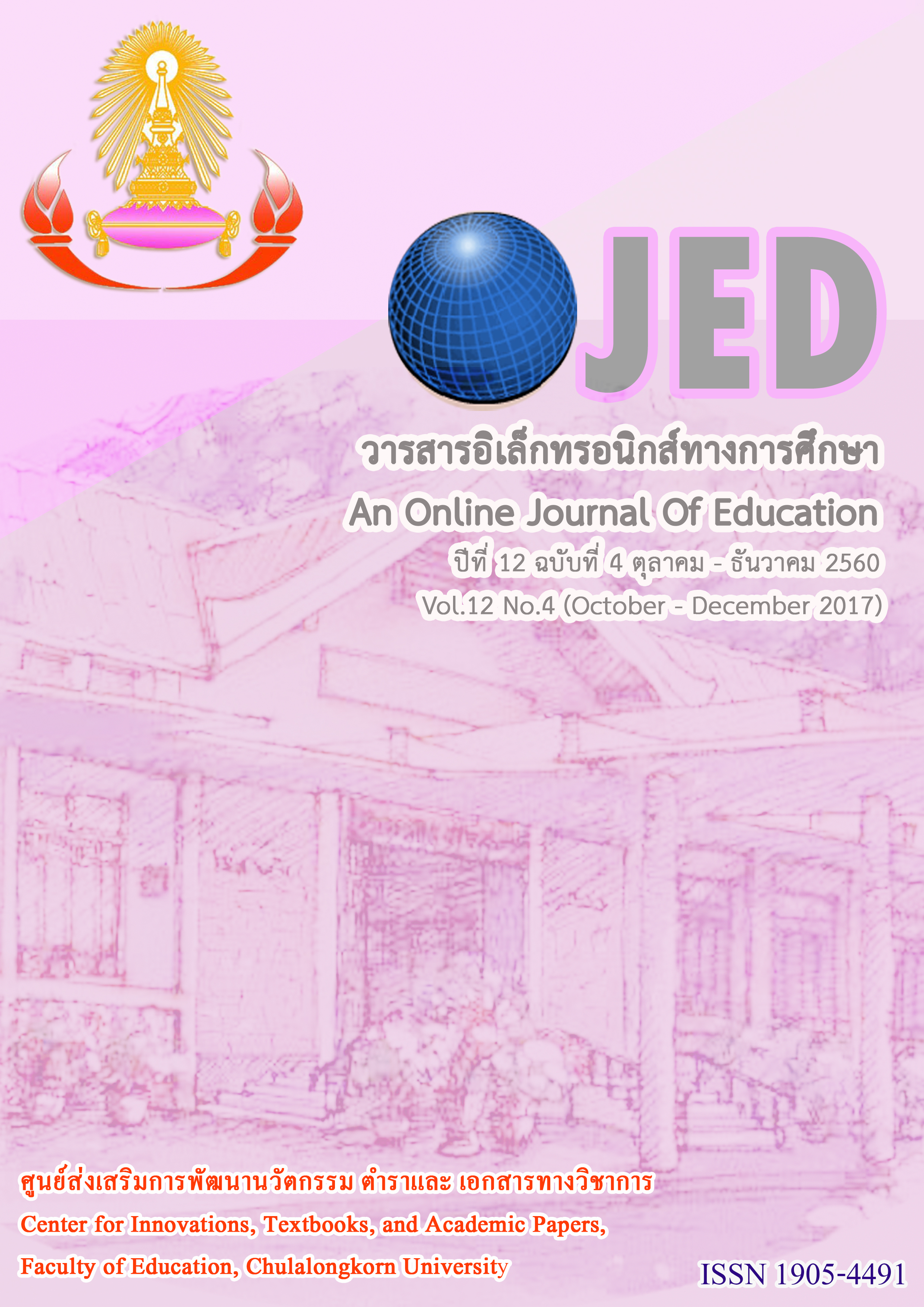การกำหนดขนาดตัวอย่างแบบมอนติคาร์โลในโมเดลการวิเคราะห์องค์ประกอบเชิงยืนยันสำหรับข้อมูลที่ไม่มีการแจกแจงปกติ
Keywords:
การกำหนดขนาดตัวอย่าง, การจำลองแบบมอนติคาร์โล, SAMPLE SIZE, MONTE CARLO SIMUATIONAbstract
การวิจัยนี้มีวัตถุประสงค์คือ (1) เพื่อพัฒนาวิธีการกำหนดขนาดตัวอย่างแบบมอนติคาร์ในโมเดลการวิเคราะห์องค์ประกอบเชิงยืนยัน และ (2) เพื่อเปรียบเทียบประสิทธิภาพระหว่างวิธีการกำหนดขนาดตัวอย่าง 3 วิธีการได้แก่ วิธีการกำหนดขนาดตัวอย่างแบบมอนติคาร์โล วิธีการกำหนดขนาดตัวอย่างด้วยกฎอย่างง่าย และวิธีการกำหนดขนาดตัวอย่างด้วยอำนาจการทดสอบสมมติฐานของสถิติความสอดคล้องเชิงประจักษ์ของโมเดล ข้อมูลในการศึกษาเป็นข้อมูลจำลองด้วยเทคนิคมอนติคาร์โลจำนวน 12 สถานการณ์ กำหนดจาก (1) ระดับของการระบุพารามิเตอร์น้ำหนักองค์ประกอบในโมเดลผิดพลาด 3 ระดับ คือ ต่ำ (RMSEA=.02) ปานกลาง (RMSEA=.04) และสูง (RMSEA=.06) และ (2) ความโด่งของการแจกแจงความน่าจะเป็นของตัวแปรสังเกตได้ คือ แบนราบกว่าปกติระดับน้อย (ku=-1) ปกติ (ku=0) โด่งกว่าปกติระดับน้อย (ku=1) และโด่งกว่าปกติระดับมาก (ku=2) ประสิทธิภาพของวิธีการกำหนดขนาดตัวอย่างแต่ละวิธี พิจารณาจากขนาดตัวอย่างที่ประมาณได้และอำนาจของการทดสอบความสอดคล้องเชิงประจักษ์ของโมเดลด้วยสถิติทดสอบไคสแควร์
ผลการวิจัย พบว่า (1) วิธีการกำหนดขนาดตัวอย่างแบบมอนติคาร์โลที่พัฒนาขึ้นประกอบด้วย 4 ขั้นตอนคือ การกำหนดโมเดลการวิเคราะห์ การประมาณโมเดลประชากร การกำหนดเงื่อนไขของการจำลอง และการกำหนดขนาดตัวอย่าง และ (2) วิธีการกำหนดขนาดตัวอย่างแบบมอนติคาร์โลเป็นวิธีการที่มีประสิทธิภาพสูงที่สุดเนื่องจากสามารถคำนวณขนาดตัวอย่างได้ต่ำที่สุดและยังรับประกันอำนาจของการทดสอบความสอดคล้องเชิงประจักษ์ได้ใกล้เคียงกับระดับที่กำหนด
The purposes of this research were: (1) to develop the Monte Carlo sample size determination method in confirmatory factor analysis, and (2) to compare the efficiency between three sample size determination methods included the Monte Carlo method, the rule of thumb method, and the power based method. Data was generated by using the Monte Carlo technique under 12 simulated conditions via the R program from (1) the misspecification level including low (RMSEA=.02), moderate (RMSEA=.04), and high (RMSEA=.06), and (2) the kurtosis level of the observed variables distribution including low platykurtic (ku=-1), normal (ku=0), moderate leptokurtic (ku=1), and high leptokurtic (ku=2). The efficiency of each method was considered by estimating the sample size and power of goodness of fit test via chi-square statistic.
The research results were: (1) The developed Monte Carlo sample size determination method consisted of four steps; the first step was the research model specification, the second step was the population model estimation, the third step was the specification of the simulation conditions, and the final step was the determination of sample size; and (2) the Monte Carlo sample size determination method was the most efficient method because it gave the lowest sample size and guaranteed the desired power of the goodness of fit test via chi-square statistic.




